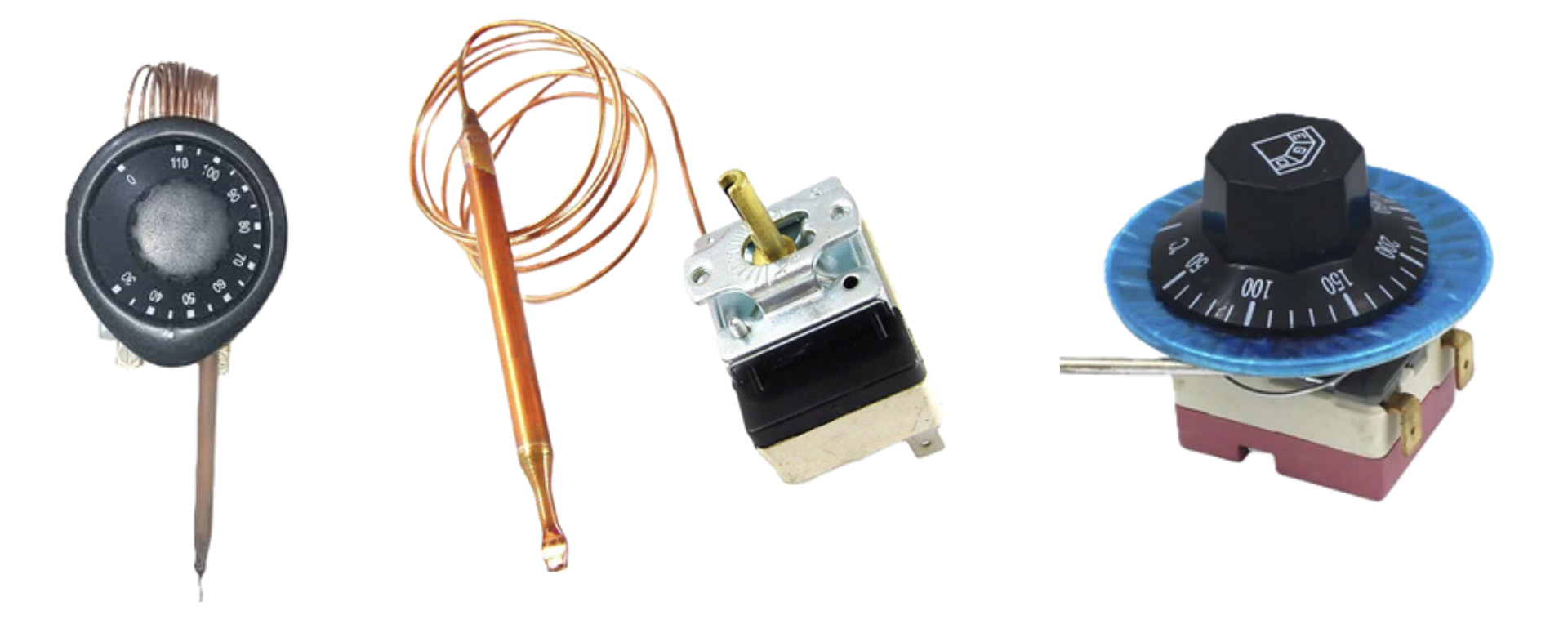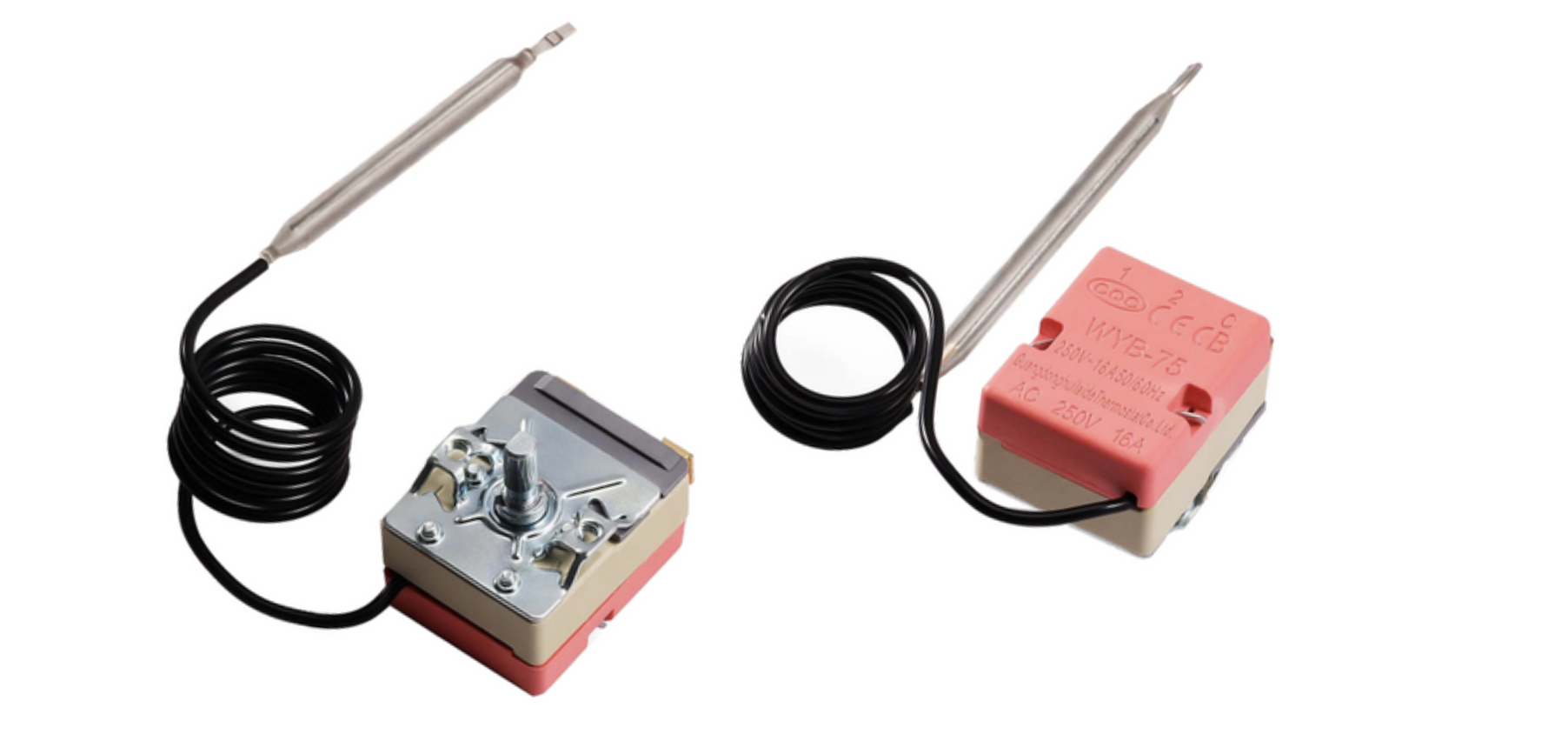Capillary Thermostat

Capillary thermostats are widely used for temperature control in various applications, offering flexibility in sensing temperature at a distance from the control unit. They work by using a fluid-filled sensing element and a capillary tube to measure and regulate temperature.
Key Features and Applications::
- Remote Sensing: The main advantage of capillary thermostats is the ability to sense temperature at a location separate from the control unit, making them ideal for applications where the temperature sensor needs to be in a confined space.
- Wide Temperature Range: Capillary thermostats are available in various temperature ranges, allowing for precise control in diverse applications.
- Automatic and Manual Reset: They can be configured with automatic or manual reset features, offering flexibility in safety and control applications.
Applications:
- Capillary thermostats are used in a wide range of applications, including:
- Heating and cooling systems (air and water)
- Refrigerated freezers, ovens, and boilers
- Vending machines and kitchen equipment
- Industrial machinery and automation projects
- Domestic appliances (e.g., air conditioners, water heaters)
- Safety limiters and overheat protection

Specifications
| Temperature Range | -35 to 320 °C |
|---|---|
| Rated Voltage/Current/Frequency | 250VAC 16A 50/60Hz |
| Electrical Strength | 2000VAC / 1min / 0.5mA |
| Insulation Resistance | ≥100MΩ |
| Temperature Resistance of Main Body | 125 °C |
| Production Lifespan | 100,000 cycles |
| Switch Type | SPST SPDT |
| Sleeve Length | 50mm–600mm |
| Temperature Sensing Tube Length | 44mm–120mm |
| Temperature Sensing Tube Diameter | Ø3 / Ø4 / Ø5 / Ø6 |
| Adjustment Shaft Length | 8–30mm |
| Capillary Tube Length | 400mm–3000mm |
